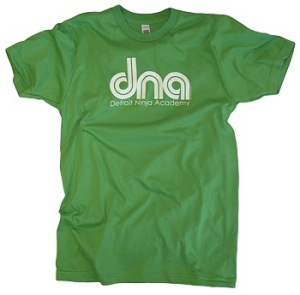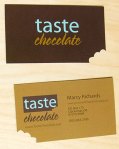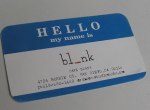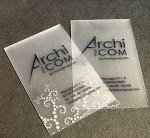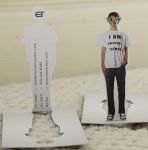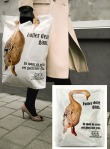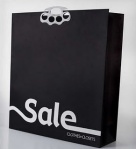This is a case study into the scenic route of design. When approaching what seems to be the simplest project, I can easily find myself going on a long journey through several drafts, eliminating “what not to do”, traveling from simple to elaborate and back again, hopefully emerging into a struck balance of good design, clear messaging and mass-appeal. Easier said than done.
Greyhouse Coffee & Supply Co. wanted to design new t-shirt for the holidays, adhering very closely to it’s values and brand. The coffee shop avoids being over-stated, and prefers subtleties and sensibilities that lend themselves to projecting a degree of artistry, as well as seriousness in coffee and community. Below is the progressive journey that lead to the final design
Draft #1
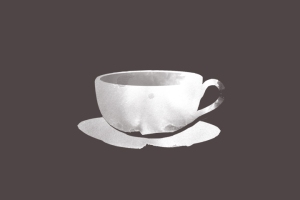
It started with this concept, the shape of a latte mug & saucer masked over a watercolor stroke. It’s simple, even only implying a cup with it’s unfinished handle. Even the saucer is simply suggested with a rough edge and hand-drawn gap between.
Yet, it wasn’t quite saying enough. It was a cup without a real message. For now, it was just an icon.
Draft #2

So, we decided to make a character out of the cup by making it one of Greyhouse’s signature drinks, The Grey Capp. Floating about the mug are the ingredients to a Grey Capp: a double ristretto espresso, textured milk, and a third ingredient that reflects Greyhouse’s values: a shared conversation.
Again, paint strokes were used as convey each layer, each with a unique color. However, screen printing can be tricky, since you’re charged for every color. So, I made up my mind to limit the design to three colors at the most, while also pulling in the dark grey of the shirt as a no-cost fourth color. White would be repeated from the mug to the textured milk, as well as under the brighter colors in order to make them stand out more vividly.
Draft #3

The design was getting to be a bit too vertical, pushing the cup and Greyhouse logo toward the belly with the paint stroked ingredients threatening the neckline. The strokes were then compressed, squaring-off the entire design. In the end, however, it started looking like instructions on making a cheeseburger. Back to the drawing board.
Draft #4

I was then inspired by a surf shirt that brought in a gradient of orange and pale yellow that stretched from top to bottom. It was risky and bold. I utilized a vectorized stock image to convey motion and energy, as well as fluidity. I found these colors and textures could still be accomplished with only three colors. This is the point I started shopping it around to other creatives and Greyhouse staff. I got a lot of “oohs” and “ahhs” on first impression. But when I asked if they would buy it and wear it, I got a lot of hesitations. That goes to show two things: 1) do your market research by asking the right people the right questions. 2) A good design isn’t good enough. People need to be willing to attached themselves to it, endorse it and wear it.
Draft #5
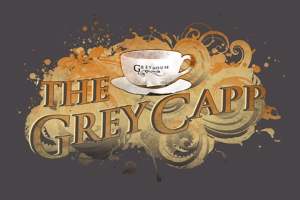
I re-visited this idea of making this a “Grey Capp” shirt by tapping into the fans of Greyhouse, and their sentimental attachment to the shop’s uniqueness. In this version, I made more of a spectacle of the design, creating the drink in to a sort of character. Again, I got a lot of excellent first impressions, followed by immediate hesitations. A lot of people just didn’t feel it would have mass-appeal when you consider that a lot of people are still frightened of espresso, or if they do drink espresso their favorite drink may not be the Grey Capp. It would appeal to a very limited demographic.
Draft #6
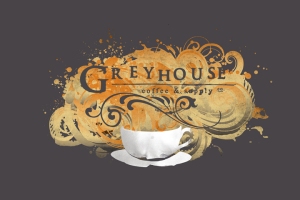
Leaving the idea of the Grey Capp behind I decided to create something that celebrated, not only coffee, but the kind of coffee experience you could only find at Greyhouse. So, I made the graphic burst from the brim of the mug, consuming it with the Greyhouse logo knocked-out across it. A couple other creatives were really leery of how swirly it was, because it reflected so many typical trends in design that simply throw noise on an image and call it artistic. That hurt a little bit, but you need to have a bit of a thick skin if you want to get it right. At this point, I remembered that really good design is actually quite simple in its execution. I really wanted to back this off. It seemed like it was trying too hard. It was too desperate.
Draft #7

In an attempt to go in a different direction, a few accidental discoveries happened resulting in the above image. It was actually in the presence of some of my friends, and everyone’s eyes got big, followed by an “ooh”. I wish I could say it was my creative genius and artistic intuition. No, it was me simply erasing one layer, then accidentally turning off another layer and *poof*. I believe the positive response had less to do with great design and more to do with the relief everyone felt my leaving the former draft, which was so busy and heavy. This, however, needed some refinement.
Final Design
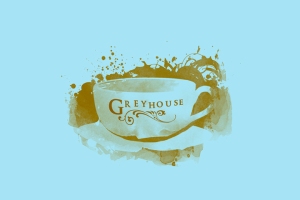
So I came full-circle, as I suspected I would. I went back to that first image of the mug & saucer. I infused it with the knocked-out splash and added a few more hand-done elements. I believe it strikes the balance. It contains coffee iconography, yet keeps it subtle, or perhaps only implies it. It’s artistic without being showy. It doesn’t scream, but it certainly whispers. It showcases the shop’s logo, while projecting certain values about itself. And finally, it offers a mass-appeal. People want to wear it. The shirt-color is still debatable at this point.
And so, what did I learn today? Absolutely nothing. There is no formula or magic trick. Design is dirty. You’re gonna have to get your hands in it and make a lot of presumptions and mistakes along the way. It often costs me so many ideas that will never be used, in order to create something that hits the target. Maybe accepting that is the take-away.
To those needing design work, whether it be a logo, postcard or a shirt design: Be willing to hire someone who is willing to take the scenic route of design, and struggle to get it right. It’s worth every penny.















